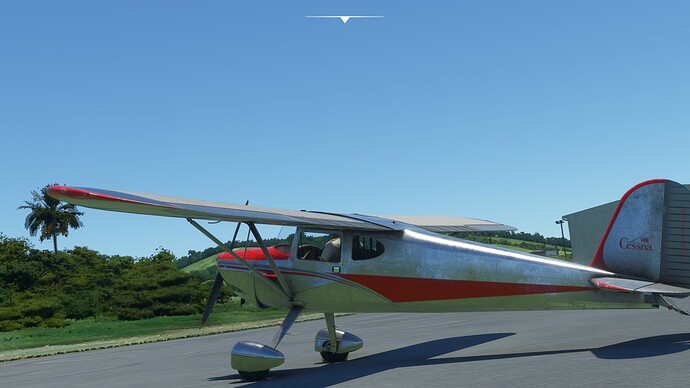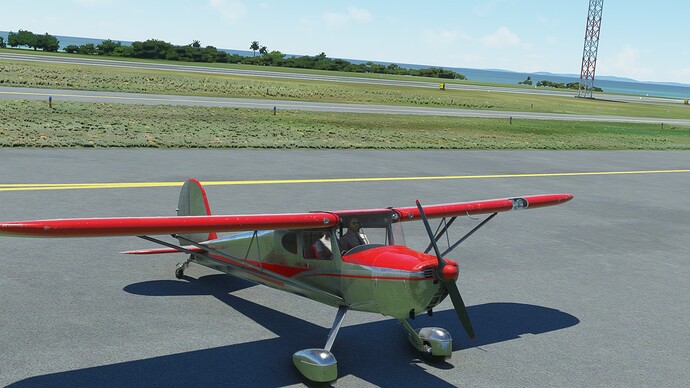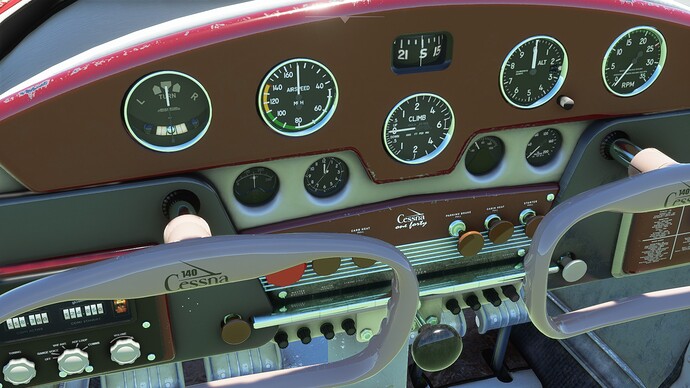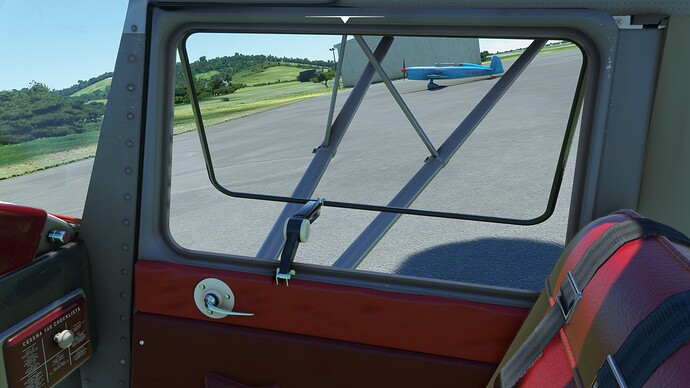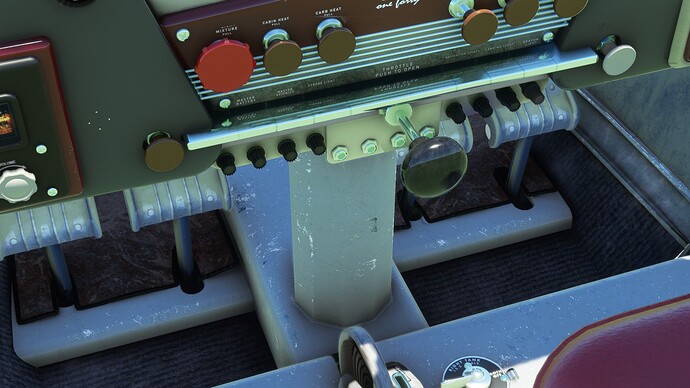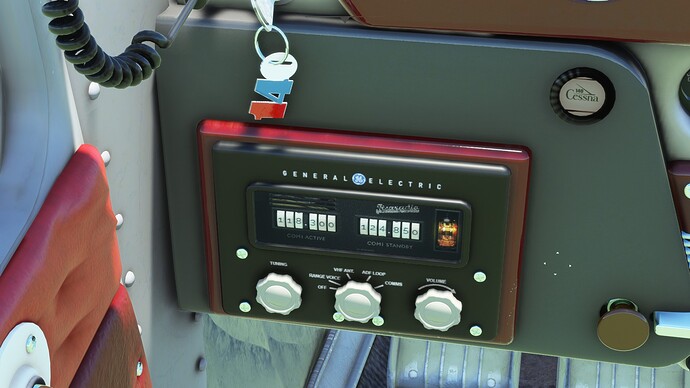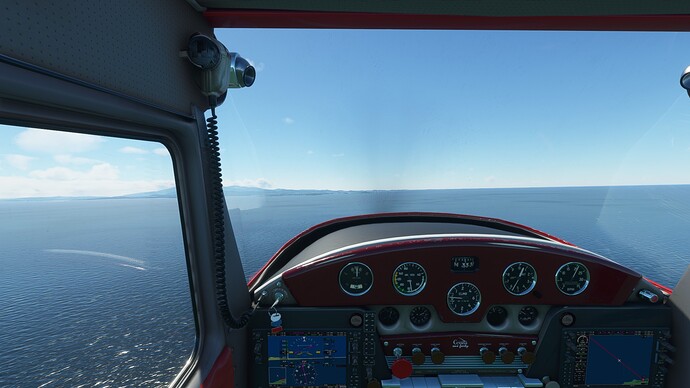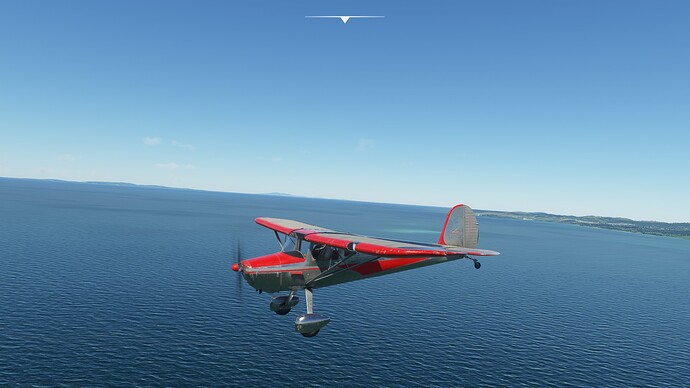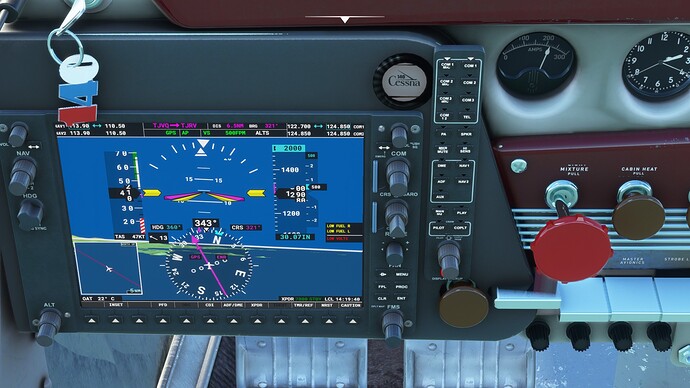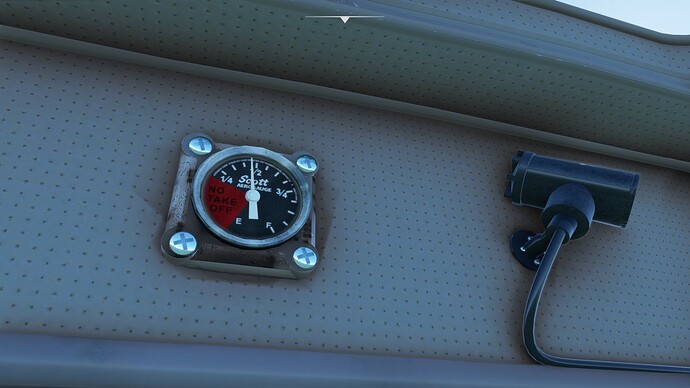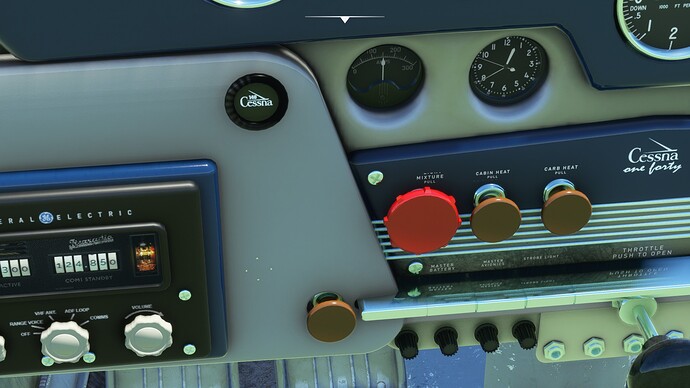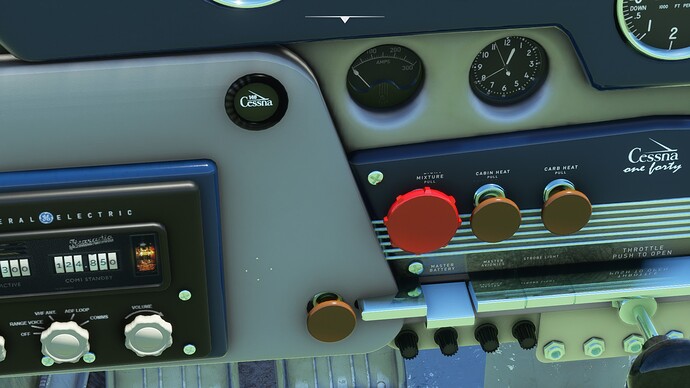Nothing I’ve seen for adjusting the sound.
I do agree the bass is maybe a little strong and overall volume is on the louder side. Hopefully they get addressed in an update ![]()
how are comparative frame rates in this one? say to the default C152 or the BBS L19?
a poster on another forum indicated a drop with this C140 and for me that’s a non-starter
I haven’t noticed a drop in my frames with this one. I don’t have the L19 to compare with but, with the c152 I see the same frames as I am seeing in this. Both see me sitting around 35-40fps (on average, sometimes I saw it climb higher.. but most of the time it is within that 35-40 range) depending on my location, weather etc.
Specs: Ryzen 1600AF @4GHz, RTX2080 (8Gb), 32GB RAM. [viewing through a 1440p ultrawide].. Sim settings are on High (bar a couple).
This thing looks like an old 50s or 60s car. Beautiful!
Well, consider me a little disappointed in yet another aircraft that took me under 30 minutes to find all sorts of issues with. I don’t know how this stuff gets past ANY kind of testing. Did someone not spend 30 minutes with it? It’s a promising aircraft, but let’s face it, it’s a Cessna 140 - there is nothing complex about it.
GRAPHICS:
That’s done well. The aircraft looks nice outside and inside. Well-done. Night-lighting is done pretty decent too!
SOUND:
It’s OK. Nothing to write home about, it does the job. It does seem to be a Legacy sound set and not WWise, but I don’t think it’s a bummer. The engine sounds nice on startup and running. A loop is noticeable in cruise.
SYSTEMS and FLIGHT:
OK… they blew the electrical system on this. When you start cold and dark, your ammeter will read 150. As soon as the master battery switch is on, everything dies and it reads 0. If you enable the avionics (I did that with a WT G1000), you will notice that a Low Volts light is illuminated. This is likely the cause of the previous reviewer’s aircraft dying mid-air after a while - there is no alternator switch of any sort and the ammeter that reads 0 signals to me that something is goofy with the electrical system here. This will present a problem if you are doing things longer than a 7 minute island hop I did. Also, the WT G1000 reports Low Fuel almost right after take-off and I started with 50% in both tanks - that’s probably because WT G1000 is not particularly aware of this aircraft’s fuel capacity though. Not really on Aeroplane Heaven.
Flaps on this aircraft are pretty useless - which is apparently how the real thing flies - the surface area is so small that it’s negligible to expect any decent lift or drag out of them, so plan landings and approaches thoughtfully.
Power on and off stalls feel exactly the same. She will drop the right wing and is EASILY recoverable in about one second. That MAY be true to how it is, I don’t know…
Trim is really nice and easy to get it to fly with no control surface input. That autopilot is really not needed here, but… sure, the option is nice to have for those who want it.
Clickspots are goofy on the tank selector - sometimes they work, sometimes they don’t. If you click and hold Engine Starter, it will RAPIDLY oscillate between ON and OFF. Also… if you have mixture to ZERO, it will fail to start as expected… but if you then turn off the starter, that makes it attempt to start it again. So it seems that clicking it to OFF produces the same result as clicking it to ON.
Flaps handle doesn’t have tooltips for states other than UP. The other ones simply are missing.
When you load the aircraft, all the blurbs on the loading screen will be about the default 172.
OVERALL:
It’s nice to look at. I wish I could say the same about flying. It’s definitely not a MUST-BUY right now. If you are thinking about it, I’d definitely wait until they iron out these issues that are holding it back from being a good simulation.
I really wanted to say a lot more positive about it, but these issues really need to be taken care of. This is your first MSFS aircraft, guys… And it’s a Cessna 140, which came out of nowhere. If the 140 has these problems, what will the DC-3 be? Please have someone test your stuff better. I really want the brand to do well in MSFS.
the entire experience feels a bit… underwhelming. Nothing like the Piper from JF
You have some good points, but this sounds like your expecting it to have the same power and performance as the JF Arrow. The 140 is a much older, less powerful plane. It should feel underwhelming compared to the Arrow III.
I also saw some pilots with real life C140 experience mention that the flaps have little effect on the real planes.
I bought it and took it up for half an hour. I found it fun and easy to fly. I can attest that you can nose over if you land and hit the breaks too hard. Second attempt was much better.
I noticed some bugs as well, but as with everything in MSFS, I’m sure it will improve with time.
ty for the review, clear and concise, i wait it out… i want more quality for that price.
The underwhelming experience has nothing at all to do with the aircraft’s power. It’s the flight characteristics and the feel. The Arrow feels alive. This one feels… there. The flaps aren’t designed for nothing. I am pretty sure that if the 140’s designers felt they were not doing much, they wouldn’t have been implemented on the aircraft. ![]() They provide lift and drag by design. It doesn’t translate well in this simulation, that’s all.
They provide lift and drag by design. It doesn’t translate well in this simulation, that’s all.
it’s a kite - not a cross country commuter, unless it has the 108hp Lycoming fitted to the nose.
1949 CESSNA 140A - Specifications, Performance, Operating cost, Valuation, Brokers - planephd.com
Yeah… it’s not the cheapest simple GA out there. Go see A1R Ryan. This just doesn’t have the same value for how it flies and the issues present. I am sure if these issues get handled, I will be more enthusiastic about it!
Thanks for the review. I was hoping the flight model would be more accurate. Just Flight has shown us it can be done for GA aircraft.
Just for perspective… this aircraft is basically half of the DC-6 in terms of price.
Hi everyone and thanks for sharing your initial impressions about this plane.
When I started the topic I did it just to have a place for everyone to keep track of this airplane but I have to admit it’s not an aircraft I was very interested in.
Not having any previous experience with this developer I am however eager to learn where AH stands and what can be expected.
From the screenshots shared I find I’m liking the looks.
The manual they made available online, however, seems too generic, ie. no numbers and only very basic information about the plane. So that raised a few flags here.
To share something with you, the C-140 should climb like this (assuming a Continental C85-12 or -12F is modeled to any extent):
- Climb at full throttle.
- Best rate of climb 73 mph.
- Engine rpm 2250 to 2380.
Aside from climb specs, flaps are basically either retracted or fully extended, anything in between it’s really functional limbo.
I mean it sure is a simpler airplane than a C-172, but since much more complex planes have been given the Frankenstein treatment by slapping good graphics (and a hefty price) on something we already have in sim I really want to understand what’s on offer here before pulling the trigger.
Edit: there’s an in depth resource about the C-140 at this address - http://n140tw.blogspot.com/ - the owner of the page (almost) restored a 1947 C-140.
Sadly I am not surprised it turned out to be disappointing, it feels like a rush job to deal with the disappointment from the Spitfire delay.
It looks like most of their layout went to the visual model - which looks quite fine from these screenshots.
I think flight modeling in MSFS is largely hit n miss and probably due in equal parts to the global FM issues of Asobo and some learning curve for the devs on the changes to implementation vs FSX P3D,Xplane etc.. and will likely be sorted out in due time.
The sound issues might take longer to sort out.
I like what I see, and this type of airplane is suited to the short hop GA flights I prefer.
Thanks for the reviews and screenshots - much appreciated
Many developers are able to process more than one project at a time.
AH have also the luxury of really just taking their existing artwork and having only to upgrade it to MSFS standards (or as close as they care to get) which is likely far less work than building a plane from scratch.
Calling it a ‘rush job’ is maybe not as fair to say, as merely taking their resources from the Spitfire and focusing on the C140 for release.
The flaps aren’t designed for nothing. I am pretty sure that if the 140’s designers felt they were not doing much, they wouldn’t have been implemented on the aircraft.
You’d think, but this is a comment from a Facebook post on the release…
I wonder if the flaps will be just as useless in this, as they are in the real plane? The only thing they are good for is over speeding them. Full flaps is decent for a steep approach, but everything else is next to useless.
Alright, so a few pointers here, I helped test some flight characteristics on this aircraft for AH. I fly a C140 in real life.
1.) Unless you’re taxiing at 30-40kts, slamming on the brakes will not flip it onto it’s nose. You’d have to be at a higher speed with the tail already off the ground to flip it when slamming the brakes.
2.) The flaps do next to nothing in real life. This is one aspect that we went over thoroughly, and is almost exactly as it is in the real aircraft. The flaps in the real C140, are next to useless. In fact, the only thing they’re jokingly good for, is over speeding them… The full flaps setting is useful for a steeper approach, but overall we mostly land them flaps up in real life.
3.) You’ll barely maintain 500fpm at 75kts in real life in this thing. Hell, cruise speed is right around 75-80kts. It’s only an 85hp engine. If you meant to say MPH, as the airspeed indicator indicates, it’s still too fast to get any meaningful climb rate. You want to be at 60-70mph in climb. It’s an old plane with a small engine, it won’t climb well at all.
When I was first training on this aircraft, we flew under the KIAD Class B, and for a cruise climb after passing each ring, I had a habit to try climbing at 80mph, habitually. My instructor would always chime in to say “hurry your climb up already.” 60-70mph is the sweet spot.
4.) The low fuel warning in the G1000, is most likely due to not setting correct fuel on the G1000 itself before flying. The G1000 doesn’t monitor fuel levels with a probe. The pilot must set the fuel in the G100- before flying. The fuel level in the G1000 will then go down based on the fuel flow calculations. It is this way in most reciprocating GA aircraft, in real life.
5.) The electrical issues will be sorted by AH I’m sure, fairly quickly.
6.). The issues with the autopilot in the default G1000, aren’t an issue for me, as the real plane would never have an autopilot installed. It is there, as an option, purely for those users who cannot fly without it.
7.) Regarding correct technique, so as not to overspeed on approach, fly the traffic pattern at 2100-2200 RPM. This should give you approximately 75-80mph airspeed. Abeam the end of the runway, pull the carb heat out, chop the power and maintain 67mph, count to 10 at a steady pace, and then start your turn. Maintain 67mph all the way to the threshold. If you need, you can also do full flaps for a wee bit steeper approach. Again, they’re only really good for overspeeding them, but will allow a slightly steeper approach. Watch that airspeed!
Ok, thank you for a clarification on the flight characteristics. It still a little weird because those flaps look like they would produce some meaningful aerodynamic lift/drag, but if you fly one of these, you’d know better.
Well, the electrical issue is still a problem, but as you said, I am sure they will handle it.
The surface area on the flaps is so small, compared to, say, a C172. I sometimes use 1 notch of flaps for a wheelie landing, but most of the time, I use flaps up all the time. Or full down for a really short runway.
In real life, mine has an extendable landing light which provides a bit more drag.
